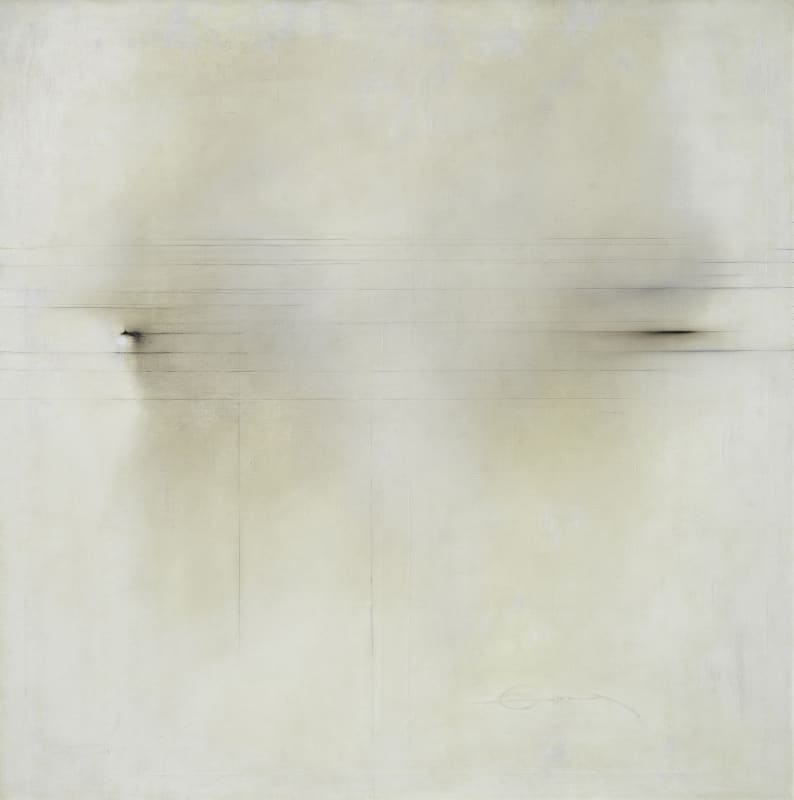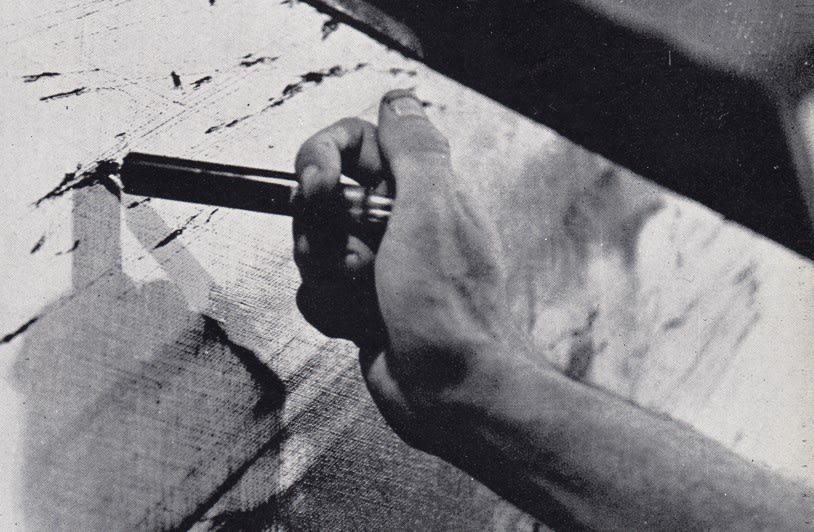The seven works by Fernando Zóbel (b. Manila, 1924 – d. Rome, 1984), assembled for this exhibition are characteristic evocations of nature and a clear reflection of the meticulous, cerebral and delicate approach that lay behind the artist’s unique personal technique. Zóbel was an internationally renowned artist who also, unusually for painters of his time, embodied the relationship between three continents: Asia, with his native island of the Philippines; North America, with the United States, where he trained and embarked upon his artistic career; and Europe, with Spain, where he settled permanently in 1961, as well as Italy and England, where he became established after taking part in the Venice Biennale and exhibiting at the Tate Gallery in 1962.
Throughout his career, Zóbel exercised an abstraction which, rooted in the evocation of nature, allowed him to make early use of a much-desired “brush to paint mist ”. Indeed, questions relating to the tools and instruments of painting, from syringes and brushes to rulers and colour samples, but also supports (canvas, stretchers, paper) and pigments recur as a formal investigation throughout his oeuvre.
Art historian Alfonso de la Torre, the author of the artist ’s catalogue raisonné, which will be published in 2022 , and the curator of this exhibition, points out that in the paintings by Zóbel on display, such as Azul sobre pardo (Blue on brown) (1959) or Celina (Celina) (1959), we can see how the pigment was applied with a syringe onto the canvas , like a suspended impulse in the manner of “an emotional improvisation,” to use the artist ’s own words. This singular and defining instrument, simply and sensitively handled, enabled him to find a way to trace long, thin and controlled lines with oil paint. A portrait of Zóbel by Fernando Nuño bears witness to this technique: it depicts a fragment of the painter ’s torso, back to the lens, ink syringe in hand. The artist seems detached from the act, as if waiting for his hand to make a decision.
De la Torre explains that the encounter between the line drawn with the syringe and the sweeps of the dry brushes transforms the linear quality and suggests direction, speed, light, and even volume, reminding us of masters like Kline or De Kooning. Although Zóbel’s pictorial universe transformed over the years, the linear essence persisted, as demonstrated by his tributes to the suspended spaces of Flemish painting, illustrated here by his painting Variante barroca (Baroque Variant) (1969) or his linear views of landscapes, such as Marina (Marina) (1974).
In June 197 7, when Zóbel opened his first solo ex hibition in Paris at the Galerie Jacob, in the street of the same name, the critic Jean-Marie Dunoyer highlighted the qualities of his painting in Le Monde, emphasising the bareness of the landscape pushed to the limits of evanescence, which is nevertheles s inscribed in reality:
Pearly landscapes, vaporou, translucent, intensely poetic, which are all localised […] We must not be misled by the apparent lack of precision. Nothing could be more solidly constructed. It delights the spectator and plunges him into euphoria.” [1]
The rare delicacy of his work also found a consensus amongst critics . Vaporous and transparent, the fluidity of his paintings conceals a rigorously elaborated construction:
“like some of those Eastern proverbs with two meanings […] they represent two visions: one global, the other meticulous .” [2]
Zóbel’s recognition in France went hand in hand with the attention he received as part of other major international exhibitions in the late 1950s: “Before Picasso; After Miró” at the Solomon R. Guggenheim Museum in New York in 1960, the Venice Biennale in 1962 and “Modern Spanish Painting” at the Tate Gallery in London in 1962, as well as the solo ex hibitions held at the Galería Biosca and Galería Juana Mordó in Spain, and at the Bertha Schaefer Gallery in New York in 1965 and 1968, amongst others.
Zóbel was an artist who was ahead of his time. He presented a contemporary vision without losing sight of the Pacific tradition. He never renounced his ties to the Philippines, remaining attached to the culture. This allowed his painting to reflect the very contemporary crossing of different worlds, without turning his back on his American training or his vision of the events that marked the development of abstract expressionism. His work has effortlessly transcended the debates between abstraction and figuration that defined the twentieth century.
Exhibition curated by Alfonso de la Torre.
1. DUNOYER, Jean-Marie. « Formes ». Paris: Le Monde, 25/ I/197 7.
2. DE LA GRANDVILLE , Léone Nogarède. « Zóbel ». Paris: Les Nouvelles
Littéraires, 16-23 juin 197 7.









